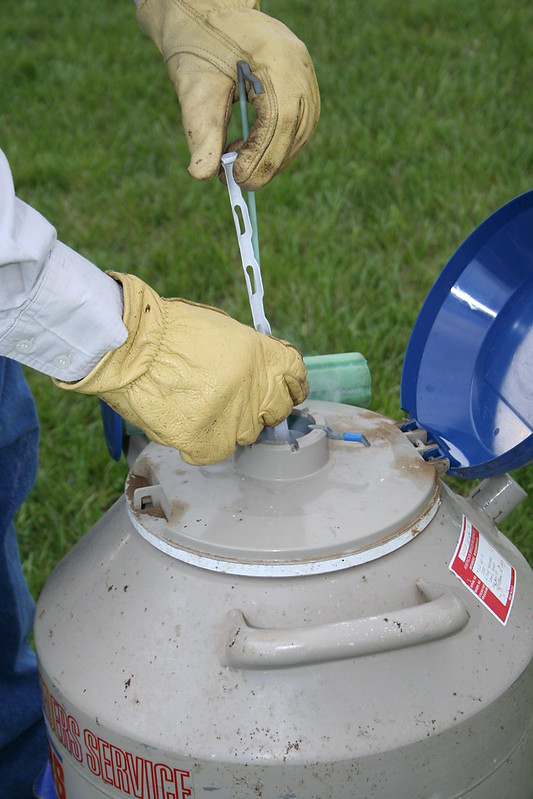K-State beef cattle experts say fixed time artificial insemination one way to bring better genetics into the herd.
May 10, 2022

Late spring is the time of year when cattle are turned out on grass pastures and cows are grouped with the bulls for breeding. However, for producers who want the genetic advantage of certain sires, a fixed time artificial insemination plan may be the better option, according to the experts at Kansas State University's Beef Cattle Institute.
During a recent Cattle Chat podcast, veterinarians Bob Larson, Brian Lubbers and Brad White discussed the protocols behind fixed-time AI with Beef Extension Specialist Sandy Johnson. Johnson serves on the beef reproduction task force and has done a lot of research in this area.
"The success of an AI breeding program starts a year in advance with how the cattle are managed nutritionally and when they calved in the prior breeding season," Johnson says. If the cattle are in good body condition and they have resumed cycling prior to synchronization, the success rate of a fixed time AI protocol is essentially the same as natural mating with a bull.
In studies done at K-State and other universities, Larson says typically 60% to 70% of cows that ovulate a fertile egg and are bred by a fertile bull or with fertile AI semen will become pregnant each heat cycle – and this is the same percentage for both AI and natural breeding with a bull.
With a fixed-time AI protocol, the cows are synchronized to come into estrus through the use of hormones that mimic the natural hormones that control reproduction.
Part of this success is dependent on the training of the person doing the artificial insemination. "If you are doing it yourself, make sure you have training and realize that you are not going to be as proficient in breeding cows through AI as someone who does this every day," Lubbers says.
In some large operations producers hire an AI company to come in and do the breeding on an appointment. "As the protocols have improved over the years, we have moved from producers doing the AI breeding to hiring that out to professionals to do," Larson says.
Along with a skilled technician, the experts agree good cattle handling facilities are important in the success of the protocol.
"With our best fixed time AI systems, the cattle are making three trips through the chute with the third time being insemination," Johnson says. White adds that this handling will happen over a period of 10 days.
Another benefit is reduced stress for handling cattle in good working facilities. "Lowering the stress by having good facilities to work in is beneficial for both the cattle and the people," White says.
Source: Kansas State University Research and Extension, which is solely responsible for the information provided, and wholly owns the information. Informa Business Media and all its subsidiaries are not responsible for any of the content contained in this information asset.
You May Also Like



